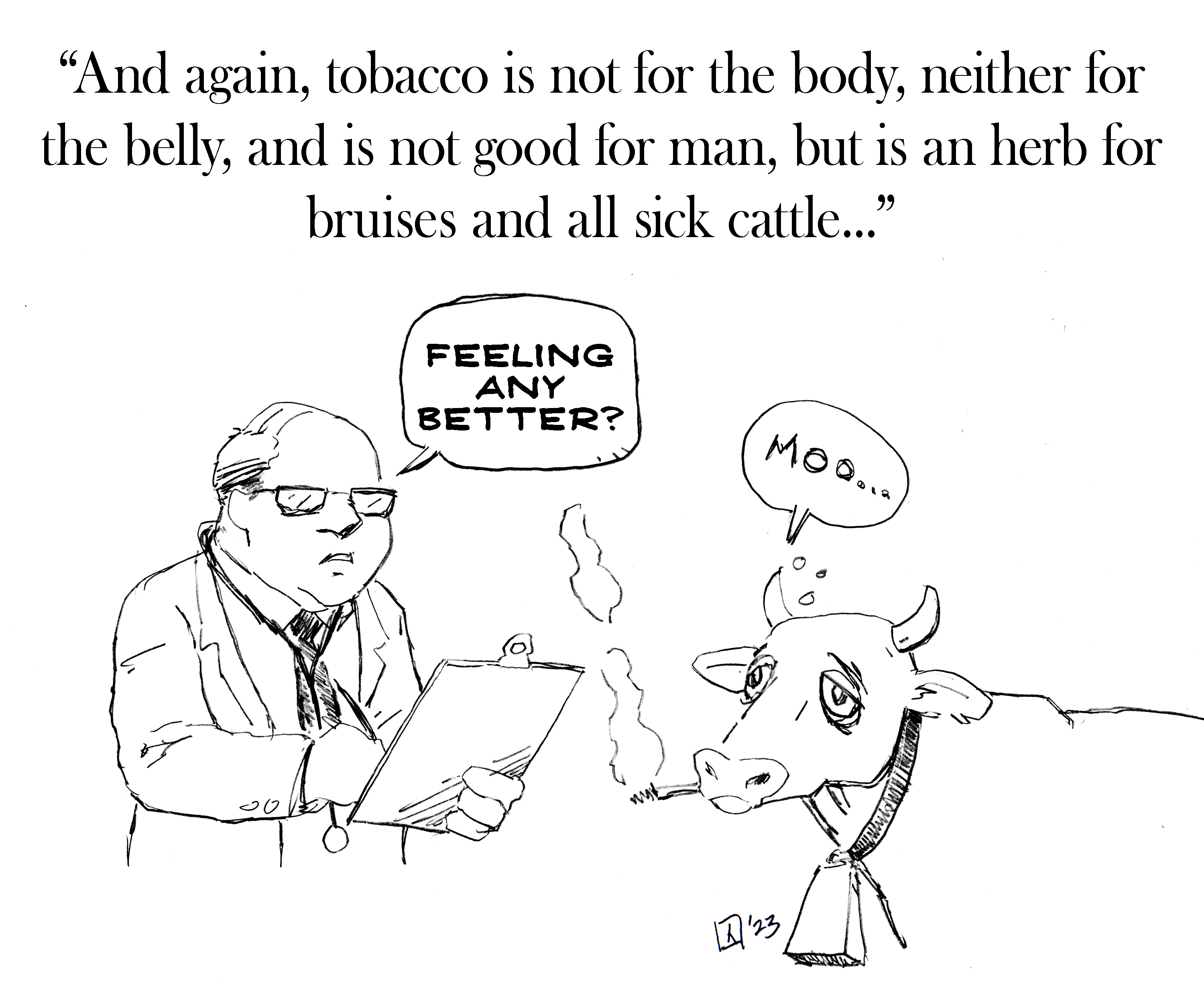Recently, several Latter-day Saint writers got together and wrote a proclamation of sorts that rustled a few feathers. The write up was called, “Latter-day Saint Radical Orthodoxy” and many felt it was either radical or orthodox but not both. Here’s what I mean by that, as one of the signatories. For some, the concepts were so clearly good and orthodox that it didn’t read as very radical. Yet others felt it was so out there and radical that it was certainly not orthodox. Another opinion voiced was that the manifesto was too hard to understand with the article’s healthy helping of vocabulary the average person wasn’t familiar with.
Taking a page from the success of Thomas Paine’s “Common Sense,” when trying to reach the masses one can reach the most people by using the simplest and plainest words. The downside is that this approach often uses twice as many words. So to explain the complex concepts of Radical orthodoxy in the plainest way possible, I gathered up some friends to give the world: Radical Orthodoxy in Simple Terms. The original text is in black, with the simpler versions in red.
Latter-day Saint Radical Orthodoxy a Manifesto
[A faithful Latter-day Saint approach to asking questions without abandoning prophetic teaching.]
Paragraph 1
As disciples of Jesus Christ, we are called to hold fast to the revealed truths of the Restored Gospel in a polarized and contentious world.
As members of The Church of Jesus Christ of Latter-day Saints, we believe in and follow the teachings of the restored gospel even while living in a divided world of fear and anger.
This polarization is driving members of the Church to spiritually dangerous extremes, tempting some Latter-day Saints to reduce fidelity to knee-jerk traditionalism and others to abandon fidelity for worldly philosophies.
The fear for the future that exists drives people to dangerous extremes in thought and behavior. It makes them feel reactive like they need to in “righteous anger” attack each other over certain beliefs that are different from their own. This goes against the teachings of Christ and is a worldly view of how to solve problems with our fellow brothers and sisters. Some Latter-day Saints are more loyal to traditionalism (which is the upholding or maintenance of tradition), especially in resisting change, than they are to the commandments of love one another. And some members are moving towards abandoning loyalty to the gospel to follow after anything but traditional Latter-day Saint teachings, and employing broken, worldly concepts that do not bear fruit in the long run.
Paragraph 2
On the one hand, those who replace divine instruction with secular measures of progress risk relinquishing eternal truths for misguided worldly ideas. This can lead them to declare that the Church is behind the times on moral and social issues. On the other hand, those who focus solely on conserving what we have already received are prone to conflate human tradition with eternal truth. This can lead them to condemn any form of question-asking, faithful exploration, or subsequent revelation.
Those who follow only current human knowledge especially in the latest trends and “philosophy fads” to solve problems risk losing the value of Christ’s wisdom and ways. This can lead people to think that Latter-day Saint doctrines are outdated, especially with gender or sexual issues. However, on the other hand, one can become so stubbornly focused on “the way things have always been” that they fail to accept new revelations or anything that challenges old ways of doing things. They may mix-up traditions with doctrine believing this is “all there is” or “this is the only way of doing things.” A person who does this is more likely to become upset when faithful members are exploring new ideas or asking honest questions—as well as when prophets introduce new adjustments to older ways of doing things.
Paragraph 3
Like Odysseus sailing between Scylla and Charybdis, the path of discipleship takes us through a narrow course between two spiritual monsters: unbridled progressivism and obstinate fundamentalism. Navigating these perilous waters requires radical orthodoxy. Radical orthodoxy is an approach to the Restored Gospel that seeks to harmonize fidelity with exploration and cultural improvement.
Being a true disciple of Christ means trying to stay on the straight and narrow path. On both sides of this path are worldviews pulling at us to step off and let go of the iron rod. On one side we have overbearing tolerance which is when a behavior or idea is falsely believed to be acceptable by God without regard to His revealed truths (see Alma 41:10). On the other side, we have stubborn fundamentalism which is an overbearing and strict mindset that lends itself to being judgmental and closing the door, too often, on more light and knowledge (see Jacob 4:14). To stay on the path and to cling to the iron rod while being pulled from both of these sides requires radical orthodoxy. Radical orthodoxy is what the disciple of Christ does to hold on to already revealed truths while also seeking continuing revelation and cultural improvement.
Paragraph 4
Radical orthodoxy is orthodox because it promotes fierce fidelity to revealed truth, the institutional Church, and the Lord’s authorized representatives, and therefore rejects the excesses of progressivism. This includes meticulously heeding and unabashedly embracing the counsel and teachings of prophets and apostles regarding chastity and morality, the divinity of Christ, and the foundational claims of the Restoration—even when doing so runs contrary to popular, worldly views. Those who embrace radical orthodoxy strive to be valiant in their witness of restored truth.
Radical orthodoxy is “orthodox” because it encourages complete loyalty to truth as revealed by The Church of Jesus Christ of Latter-day Saints through Prophets and Apostles. It, therefore, avoids the danger of thinking that we know better than the leaders of the Church and trying to push the Church to change or progress to fit our own views. We are fully committed to supporting and following the counsel and teachings of prophets and apostles on chastity and morality, the divinity of Christ, and the Restoration, even when these beliefs are not popular or trendy. We try to be courageous in testifying about these things.
Paragraph 5
Radical orthodoxy is radical because it promotes bold exploration beyond what is familiar, and therefore rejects the obstinateness of fundamentalism. It is willing to revisit many facets of our received paradigm in order to apply the revealed doctrines and principles of the Gospel to the unique challenges of today. That includes—under the tutelage of modern prophets—a revolutionary reconsideration of traditions, paradigms, and applications of the Gospel inherited from prior generations.
What do we mean by “radical”? That sounds like extremist stuff. No. In this case, the idea we want to hold on to is that each of us, in our own way, sometimes goes a little too far this way or that way. We latch on to an idea that is a little more progressive, or a little more fundamentalist, than modern prophets intended. We want all of our traditions, paradigms, and applications of the Gospel to be more finely tuned to what God has revealed. That can help us be less likely to go off the rails on either side. In today’s environment where all sides are screaming for our attention and allegiance, this really is radical stuff!
While continuing to adhere to prophetic counsel, the “radical” in radical orthodoxy means that we are willing to explore new ideas and ways of thinking about the Gospel and the world around us. That includes being willing to challenge things that are part of the culture or traditions surrounding the Gospel. And we follow the example of the modern prophets in being willing to reconsider traditions and policies that have been inherited by tradition from the past.
Paragraph 6
Radical orthodoxy cultivates humility and a recognition that far less is certain about many doctrinal matters than we often presume. Those who embrace radical orthodoxy are not afraid to ask questions, and they eschew dogmatism with regards to lesser controversies—even while they boldly defend faith, diligence, and conviction on matters of covenant living, revelation, doctrine, and authority. As we revisit the lines between tradition and revelation, we are careful not to dishonor the prophets of the past, undermine the projects and programs of the Church, or ignore the moral witness and counsel of living prophets and apostles.
We try to be humble and recognize that, while the Lord has revealed a lot of things for certain, it’s a lot fewer things than Latter-day Saints often think. We are not afraid to ask questions, and we try not to be unmovable or unteachable on a topic if the prophets don’t seem to have taken a firm stand on it, or if they don’t seem to have emphasized it as being most important. But on the other hand, we boldly defend our covenants and the principles of continuing revelation and divine authority. But even as we stay open to exploring new ideas and changes, we are careful not to disrespect past prophets, nor to make it harder for current prophets to persuade the Saints to follow current Church programs and practices and goals, nor do we ignore the testimony and guidance from living prophets and apostles.
Paragraph 7 (Virtues)
Radical Orthodoxy embraces the following virtues:
Radical Orthodoxy is about attempting to develop the following positive values:
-
Truth. We love and defend the Truth. We reject philosophies that suggest that there is no truth. We recognize, however, that without divine assistance, truth is very difficult to discern.
Truth. We love and defend the truth. We reject any philosophy or teaching that suggests there is no truth. But we recognize that without divine assistance and revelation it is very hard to know what is true.
-
Humility. We recognize our own limitations and we are willing to question our cultural and religious presumptions in light of both sound scholarship and ongoing revelation from God.
Humility. We recognize that we are imperfect. We are willing to question the things that we have assumed in the past based on our culture or religion in light of good quality scholarship and in light of ongoing revelation from God.
-
Integrity. We do not believe in compartmentalizing the Gospel from our professional pursuits, politics, scholarship, social interactions, or hobbies.
Integrity. We do not try to separate our belief in the Gospel from our jobs, political beliefs, scholarship, social relationships, or hobbies.
-
Fidelity. We are loyal to Jesus Christ and His Restored Church and submit to His divine authority by sustaining and following the local and general leaders of the Church.
Fidelity. We are loyal to Jesus Christ and his Restored Church. We show this by sustaining and following the general authorities and local leaders of the Church of Jesus Christ of Latter-day Saints.
-
Seeking. We consider curiosity a virtue and desire to plumb the depths of the Gospel as well as of God’s Creation. Like Abraham, we seek to become “greater follower[s] of righteousness and to possess a greater knowledge” than we currently possess (Abraham 1:2).
Seeking. Curiosity and a desire to learn are good things. We want to understand all that we can about the Gospel and the world. Like the Prophet Abraham, we want to be “greater follower[s] of righteousness and to possess a greater knowledge” than we currently possess (Abraham 1:2).
-
Revelation. We affirm that the Church is guided by continuing revelation. We strive to allow the Holy Spirit to guide us in all aspects of our lives, including our professional or scholarly endeavors. We recognize, however, that only those with the proper authority and stewardship can declare revelation for the Church and the world.
Revelation. The Church is led by continuing revelation. We also try to follow the Holy Spirit in everything we do in our lives, including in our jobs, and when we write things publicly or professionally. But we know that only those who have proper authority can declare revelation for the Church and the world.
-
Faith. We know that Christ has already won the essential victories. We trust the Lord and His power to save us from sin and death. We also trust His ability to guide His Church and communicate His will to His appointed spokesmen, even when they are fallible.
Faith. We know that Christ has already atoned for our sins and that he was resurrected from the dead. We trust him and his power to save us from sin and death. We also trust that he can guide his Church through the Prophet, even though the prophet is still a mortal human being, and therefore, still learning and not perfect.
-
Hope. We are deliberately optimistic about the Church and its role in the world. We reject negative, cynical attitudes towards the Church, its leaders, and its teachings. We avoid nitpicking and murmuring.
Hope. We choose to be optimistic about the Church and its role in the world. We refuse to be negative or cynical about the Church, its leaders, and its teachings. We also choose to not nitpick and complain.
-
Charity. We love all of God’s children and we cultivate a soft-hearted temperament that rejects the spirit of contention towards those with different views, even while we vigorously defend the truth.
Charity. We seek to love everyone. We avoid fighting or being angry with people who see things differently even while we do not hesitate to strongly defend what we believe to be the truth.
Paragraph 8
Radical orthodoxy is not a faction, nor a label intended to set forth boundaries for any particular group or organization. It is rather a rallying point, and invitation to embrace conviction and fidelity. It is also an invitation to reject fundamentalism and embrace the possibility of change, innovation, and progress in how we understand the Gospel. It is an occasion to reinforce our loyalties to the Resurrected Christ and the Church that bears His name and to strive to be “lower lights” burning as an example to others who are also navigating the treacherous waters of modern intellectual discourse.
This is not a precise layout of who is right and who is wrong, or a demand that people agree with us. We felt there was an urgent need to clarify what we see as some key principles that will help people maintain (or return to) their discipleship in the restored gospel of Jesus Christ, at a time when many seem to be struggling or falling away. What we wrote is an invitation to deepen commitment to these key principles to help ourselves and others survive these difficult times, while also thriving as witnesses and examples to others.
We believe Jesus Christ is a living, dynamic, and thrilling Being who exudes love above all. Discipleship to Him means we do not want or need brittle rigidity to ideas that may not be the truth but are merely culture or tradition. The ongoing restoration means we do not need to fear further light and knowledge nor the adjustments to longstanding practices as needed. Likewise, it means that we do not want or need a false man-made God who never calls us into uncomfortable realms of growth. Because our knowledge and discipleship are imperfect, we need continuing guidance and correction from the collective counsel of the Lord’s current Prophets and Apostles. Sometimes that requires laying aside old ideas and traditions, and other times, it means rejecting new concepts and movements. It always requires thoughtful attention and the guidance of the Holy Ghost along with careful regard to the counsel of the Lord’s servants. This can sometimes be a lonely place, especially in intellectual circles, so we also hoped this declaration might make it easier to find and offer support to others striving to do this same thing.
In conclusion, Thomas Paine’s declarative observation stands true, “A long habit of not thinking a thing wrong gives it a superficial appearance of being right, and raises at first a formidable outcry in defense of custom. But the tumult soon subsides. Time makes more converts than reason.” Examining our faith customs and traditions for proof that they still serve us is a good thing and keeps us from becoming modern-day Sadducees.
Appreciating virtue beyond our own faith boundaries is equally a good thing. As the new General Handbook section 38.8.33 on “Other Faiths” reads, “Much that is inspiring, noble, and worthy of the highest respect is found in many other faiths.” This is an important witness that Latter-day Saint Leadership believes we can honor and respect others’ beliefs and viewpoints and do so without losing our identity.
At the same time, we often find that the pure doctrine as taught by servants of the Lord (and which may go directly contrary to mainstream opinion) can heal so much pain and fear over things that may unsettle us. I believe Jesus Christ established His Church to enable individuals and families to do the work of salvation and exaltation. May we trust in Jesus Christ that He will direct the affairs of this organization that belongs to Him. If we feel otherwise, as we adopt some humility in our soul searching we will be open to realizing when we are wrong in our thought processing.

















